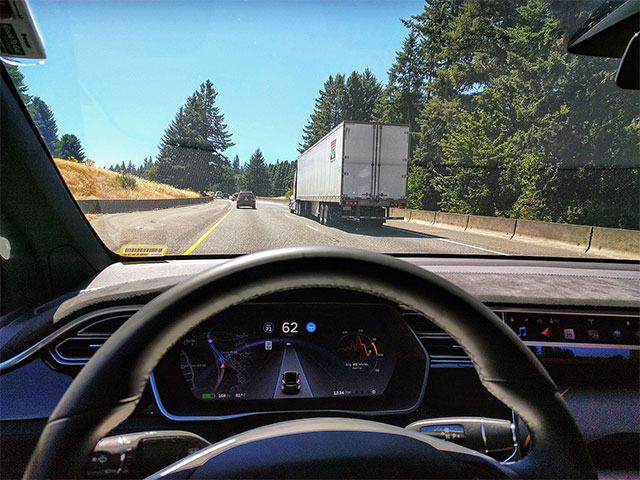As our world continues to evolve rapidly, we witness a host of technological advancements that fundamentally alter how we conduct our daily routines. Among these groundbreaking innovations lies the advent of Advanced Driver Assistance Systems (ADAS), a technological marvel that strives to enhance driving comfort, safety, and overall effectiveness. In this comprehensive blog post, we will venture into the realm of ADAS, investigating how these systems operate and examining various inventive applications that endeavor to make driving a more pleasant experience.
Table of Contents
What is Advanced Driver Assistance Systems?

Advanced Driver Assistance Systems (ADAS) encompass a collection of electronic systems that aid drivers in maneuvering their vehicles more securely and competently. Modern-day vehicular safety systems are designed to employ a complex array of sensory inputs, including cameras and other sophisticated technologies, which work together through advanced algorithms to monitor the vehicle’s surrounding environment closely. ADAS covers a wide array of applications, from basic parking assistance to more sophisticated features like collision prevention and autonomous driving.
The Mechanics of ADAS
ADAS depends on a blend of hardware and software elements to collect and process data from the vehicle’s environment. Here’s a general outline of how ADAS functions:
- Sensors and Cameras: ADAS-equipped vehicles showcase an array of sensors, such as radar, lidar, and ultrasonic sensors, alongside cameras that capture images of the surroundings.
- Data Processing: The acquired data is subsequently analyzed by the vehicle’s onboard computer system, which utilizes advanced algorithms to detect potential hazards and provide timely assistance to the driver.
- Driver Assistance: Various Advanced Driver Assistance System (ADAS) features offer feedback to the driver through visual, auditory, or haptic means and, in certain circumstances, may take control of the vehicle. The top automotive companies continually develop the latest driving assistance technology to improve driving comfort. These innovative systems integrate features such as gesture control, driver monitoring, advanced head-up displays, and 3D surround view cameras to create a natural and intuitive driving experience that puts safety first.
The Progression of ADAS
As technology relentlessly advances, ADAS has developed from basic functions like cruise control and parking sensors to more sophisticated systems capable of actively supporting or even supplanting the driver in particular situations. Here’s a concise summary of the progression of ADAS:
- First-generation ADAS: Early systems primarily concentrated on delivering basic driver assistance, such as cruise control, parking sensors, and rudimentary navigation aids.
- Second-generation ADAS: As the technology evolved, ADAS started to incorporate more sophisticated features like collision warning systems, lane departure alerts, and blind-spot monitoring.
- Third-generation ADAS: Present-day ADAS implementations have made a significant stride forward, integrating advanced capabilities like adaptive cruise control, lane-keeping assistance, and automated emergency braking.
- Future ADAS: The forthcoming generation of ADAS promises to introduce even more innovative competencies, including entirely autonomous driving and advanced driver monitoring systems that can identify and prevent driver exhaustion or distraction.
ADAS Applications for Enhanced Driving Comfort
Numerous ADAS applications are explicitly designed to elevate driving comfort, safety, and the overall experience. Let’s take a closer look at some of these inventive systems:
- Adaptive Cruise Control (ACC): ACC modulates the vehicle’s speed to retain a safe distance from the car ahead, minimizing the need for constant acceleration and braking. This feature helps alleviate driver fatigue during long trips and heavy traffic situations.
- Lane Keeping Assist (LKA): LKA utilizes cameras to observe road markings and gently guides the vehicle back into its track if it begins to drift unintentionally. This feature helps avert accidents caused by driver inattention or drowsiness.
- Park Assist: This system capitalizes on sensors and cameras to direct the driver through the parking process, offering steering assistance and visual feedback regarding the vehicle’s position relative to nearby obstacles. Park Assist significantly streamlines parallel and perpendicular parking, diminishing stress for drivers.
- Traffic Jam Assist: By merging Adaptive Cruise Control and Lane Keeping Assist, Traffic Jam Assist helps retain a protected space from other vehicles and stay centered in the lane during slow-moving traffic. This feature provides added comfort and reduces the strain of driving in congested conditions.
- Cross Traffic Alert: This ADAS feature utilizes radar sensors to identify automobiles advancing from the side while the driver is reversing out of a parking space or driveway. Cross Traffic Alert warns the driver of potential collisions, making it easier and safer to back out of tight spots.
- Highway Pilot: Highway Pilot is an advanced ADAS function that combines various features like adaptive cruise control, lane-keeping assist, and lane-change assist. It enables semi-autonomous highway driving, allowing the vehicle to perform various tasks automatically, such as speed adjustments, lane-keeping, and safe lane changes. This feature reduces driver workload and enhances comfort during long-distance highway journeys.
- Night Vision Assist: This innovative ADAS application employs infrared cameras to detect pedestrians, animals, or objects in the vehicle’s path during nighttime driving. The system provides visual alerts and can even activate automatic emergency braking to prevent collisions. Night Vision Assist significantly improves driving safety and comfort in low-visibility conditions.
The Future of ADAS
As ADAS technology continues to evolve, we can expect even more innovative applications to emerge in the coming years. Some potential developments include:
- V2X Communication: Vehicle-to-everything (V2X) communication refers to the exchange of information between vehicles and their environment, including other vehicles, infrastructure, and even pedestrians. By incorporating V2X technology into ADAS, vehicles will be able to anticipate and react to potential hazards more effectively, leading to increased safety and driving comfort.
- AI-Powered ADAS: Artificial intelligence (AI) is already playing a crucial role in the development of ADAS, but its potential is far from fully realized. Future ADAS systems will likely leverage more advanced AI algorithms to enable better decision-making and prediction capabilities, leading to improved driver assistance and enhanced driving experiences.
- Augmented Reality: Augmented reality (AR) has the potential to revolutionize ADAS by overlaying digital information onto the driver’s view of the real world. It could include displaying navigation directions, highlighting potential hazards, or even simulating the trajectory of other vehicles in complex traffic situations. AR-powered ADAS systems could significantly improve driving comfort and safety.
As we draw to a close, it is clear that Advanced Driver Assistance Systems (ADAS) are instigating a revolutionary shift in the driving landscape, elevating safety, efficiency, and comfort to unprecedented heights. The burgeoning advancements in technology allude to the potential for novel and groundbreaking applications that will undoubtedly transform the future of mobility. It is apparent that the way in which we interact with our vehicles is undergoing a drastic reshaping, with the emergence of ADAS leading the charge toward a more progressive and intelligent future.













